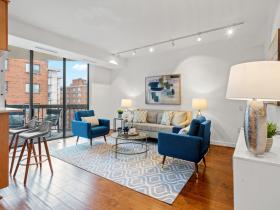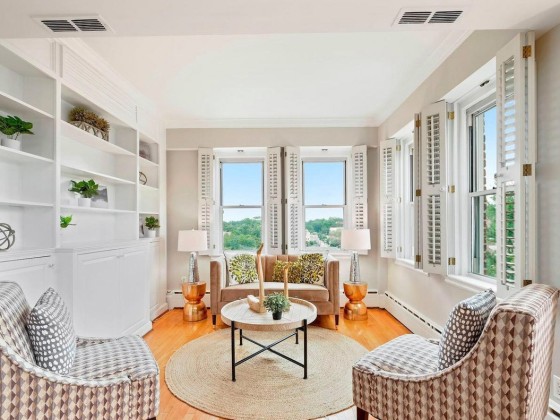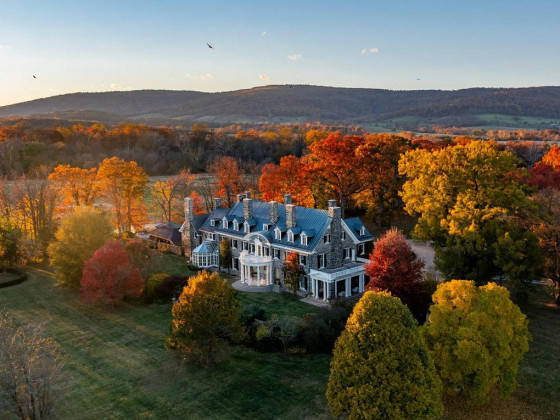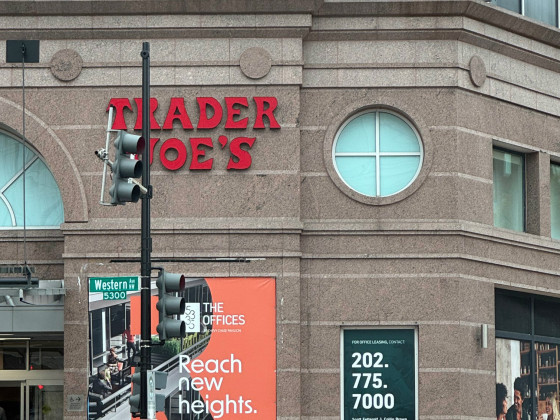 Are Seattle's Micro-Units DC's Future?
Are Seattle's Micro-Units DC's Future?
✉️ Want to forward this article? Click here.
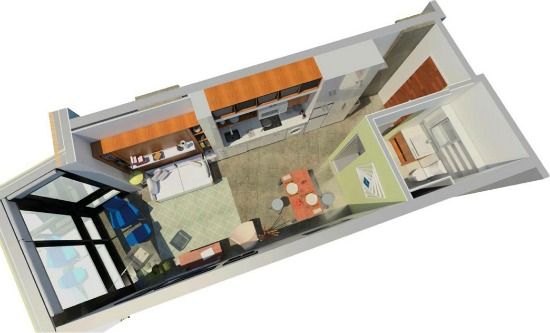
A rendering of a micro-unit planned for the Wharf from Perkins Eastman.
Seattle’s 3,000 micro-units — and counting — could be instructive for DC.
The Emerald City is the leading market for micros, according to a story published this week in Politico Magazine. The same trend is catching on in the District. At least one DC developer, SB-Urban, is focusing exclusively on building micro-units and has 355 high-end units spread across three properties in its pipeline. Other developers are planning similar, albeit smaller, developments around the city.
Seattle’s micros are much lower-budget than their fledgling DC counterparts. SB-Urban, which is planning properties in Blagden Alley, Dupont Circle and Georgetown, has said it plans to target renters making $150,000-$200,000 a year. In Seattle, the predominant micros are much smaller than anything proposed in DC, with some coming in at 90 square feet, Sara Solovitch writes in Politico. The Seattle micros are also targeting a much different market: The average tenant at a micro-unit in Seattle makes $40,000 a year.
As Solovitch writes, the developers of these Seattle units took advantage of a quirk in city code that counts apartments by the number of kitchens rather than units. That enabled developers to build larger, denser buildings with less oversight in which eight units surround a larger kitchen. (The proposed WeLive micro project in Crystal City is similarly designed around communal kitchens.) The resultant units — some technically called single-room occupancy units or SROs because they only have a kitchenette — are tiny and can be priced at a much-smaller rate. The units can rent for $1,000 or less; the going price for a one-bedroom in Seattle is $1,368.
Seattle’s micros have caused conflict, with some neighbors saying the added density is harming their neighborhoods. And many believe Seattle’s developments are reminiscent of “seedy early 20th century boarding houses,” Politico Mag notes. Micros in DC have so far trended toward units larger than those in Seattle. Still, a mention of planned 300-square-foot units — more than three times the size of Seattle’s smallest — tends to evoke disbelief and laughter at neighborhood and zoning meetings.
Following Seattle’s lead, SB-Urban and other developers are hoping to capitalize on the skyrocketing rate of single-person households in major cities. There just aren’t enough well-priced studios and one-bedrooms to house them all. In meetings, SB-Urban has said it did “quite a bit of research” to ensure there’s a growing market for micros in DC. A demographic researcher UrbanTurf has spoken to, David Versel, agrees.
The high price point of the micro-units in DC’s pipeline will limit the market for the units — for now. But as Versel told us earlier this year, prices should start to come down if the higher-priced models are successful.
“This is the beginning of the wave. What we’re seeing is we always start with the top of the market. So you’re seeing the luxury apartment go in first. When that works, you’ll see a bunch of imitators who’ll try to shave 10 to 20 percent off that rent,” he said. “If you start to see these in H Street NE or Petworth, they will be less expensive by virtue of the land being less expensive. I know millennials don’t buy cars, but the analogy is, they want a Toyota, they don’t want a Lexus. And [right now] they’re selling a Lexus here.”
This article originally published at https://dc.urbanturf.com/articles/blog/are_seattles_micro-units_dcs_future/9109.
Most Popular... This Week • Last 30 Days • Ever

UrbanTurf takes a look at the options DC homeowners and residents have to take advant... read »

A major new residential development is on the boards for a series of properties near ... read »

A new report from DC’s Office of Revenue Analysis highlights how millennials and wo... read »

The building is the second proposal for a pair of aging office buildings in downtown ... read »

The central action before the Board is a rezoning request for the nearly 36-acre site... read »
- A Solar Panel Primer for DC Residents
- 29-Story, 420-Unit Development Pitched For Middle Of Downtown Bethesda
- How DC's Population Changed During And After The Pandemic
- Fitting In: A Narrow 260-Unit Apartment Building Pitched For Bethesda
- Arlington County To Weigh Major Actions Advancing RiverHouse Redevelopment
DC Real Estate Guides
Short guides to navigating the DC-area real estate market
We've collected all our helpful guides for buying, selling and renting in and around Washington, DC in one place. Start browsing below!
First-Timer Primers
Intro guides for first-time home buyers
Unique Spaces
Awesome and unusual real estate from across the DC Metro




